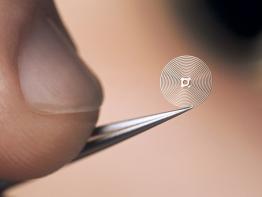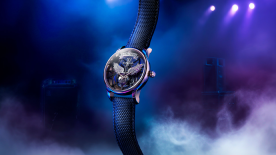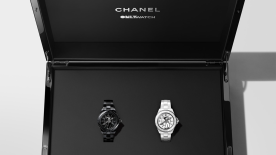The hairspring is a flat spiral spring. It consists of 12 to 15 turns, weighs around 1 milligram and is 0.03 millimetres thick. It serves a single purpose: when it coils and uncoils, it propels the balance wheel which oscillates around its axis. The balance wheel is a flywheel, meant to accumulate the energy provided by the hairspring. Both are made so that this oscillation is as regular as possible in order to become a stably recurring phenomenon. Only then can it become a master clock, a measure of time in very small increments. Wheels and pinions will subsequently convert this into seconds, minutes, hours and so on. Since it transforms the (very little) energy it receives into information, it is a mechanical processor.
Yet everything conspires to prevent it from working properly, i.e. at a stable frequency. 300-odd years of scientific progress have tried to make it impervious to all influences. And there are many at that level of thinness and lightness. The hairspring must be stainless, resist magnetic fields, air pressure changes and most of all, temperature variations. All these factors modify the shape, length and properties of a thin and long spring, which in turn alters its oscillation frequency and therefore interferes with timekeeping. It must retain its shape and elasticity no matter what. But a typical hairspring will oscillate 500 million times a year and be worn on an ever-moving wrist all the while. It's not easy staying true to oneself in these conditions.
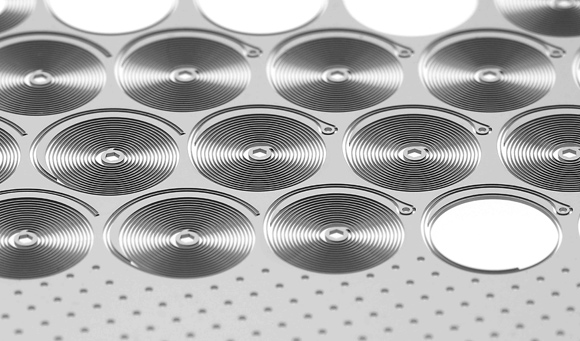
But these properties are not all a watchmaker requires. He needs one more thing: isochronism. No matter what energy the hairspring and balance wheel have received, they must oscillate at the same speed. Since a movement doesn't provide a constant force (except when it has a constant force device), the hairspring cannot rely on a steady stream of energy. There's a lot when the movement is fully wound, much less after a few hours and hardly any at the end of the power reserve. And yet, the watch must remain accurate all along. The balance wheel and hairspring are paired in order to work as a team which will remain isochronous.
The hairspring must also remain balanced at all times, when idle, when it tenses and eases. Ideally it will do so with a centre of gravity that remains aligned with the centre of the spring. But this is easier said than done because the hairspring is not completely free. It is pinned at both ends, which causes it to wiggle as it oscillates. The staff which holds the balance wheel in place is being pushed to the side of its lodging, the pivot. This doesn't look like much of a deal, but this specific friction is a pivotal (excuse the pun!) issue in watchmaking. Lack of concentricity will cause the hairspring to waste a lot of energy. This is why the outer end of the hairspring is shaped into what is known as a terminal curve. This can be either flat or raised above the spring and different types have been studied for centuries in order to keep the hairspring's centre of gravity in place as it moves.
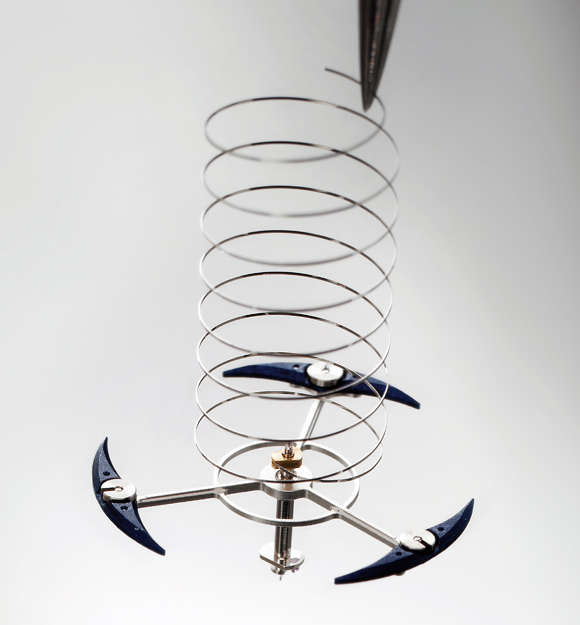
For a long time, the hairspring was made of steel, because it is solid and durable. But it is subject to so many influences that watches were wildly inaccurate. Then came the first iron-nickel alloys. In the 1920s, Charles-Edouard Guillaume discovered that they were much less prone to deformation and recommended using them for timekeeping. In 1933, Reinhard Straumann invented the Nivarox alloy, a German acronym meaning “not variable, not oxydizable”. With its very complex composition (iron, nickel, cobalt, chromium, titanium, beryllium and so forth), it quickly became the perfect material for hairspring manufacturing. It gave its name to a company which is now a subsidiary of the Swatch Group and is believed to manufacture up to 95 % of all Swiss hairsprings. Which is a problem because they have decided to decrease their supply to a very dependent watch industry. It has taken a long time, but the gap is being filled by new competitors and a new material.
After decades of status quo, hairspring manufacturing has become the focus of intense research. Cooperation between the watchmaking industry, fundamental research and the microchip industry has resulted in a brand new application: silicon hairspring. Silicon is rigid, flexible, light, stainless, smooth and impervious to magnetic fields, temperature changes and air pressure. It is THE perfect material, all the more so as its manufacturing process naturally delivers a perfectly shaped spring right off the bat. No need to turn a block of metal into a wire, to flatten it to the thickness of a baby hair, to coil it, to shape it. Silicon manufacturing does it all at once, with the type of accuracy the microchip industry requires: under the micron. As it is reliable and readily available, it gets more popular by the week and cheaper by the year. There's no telling where it will stop.
